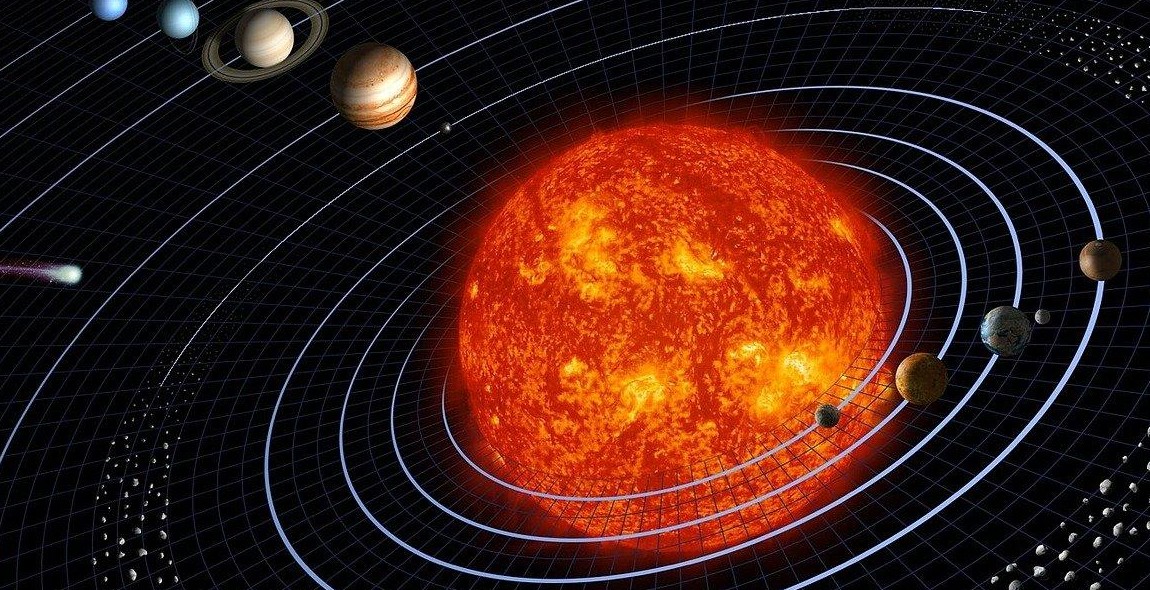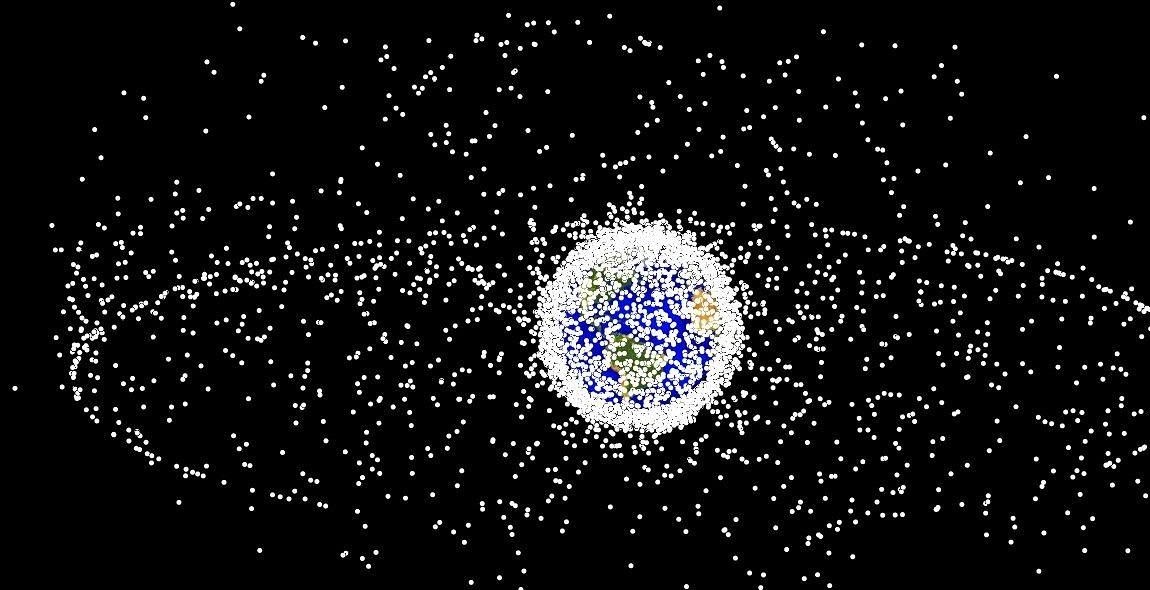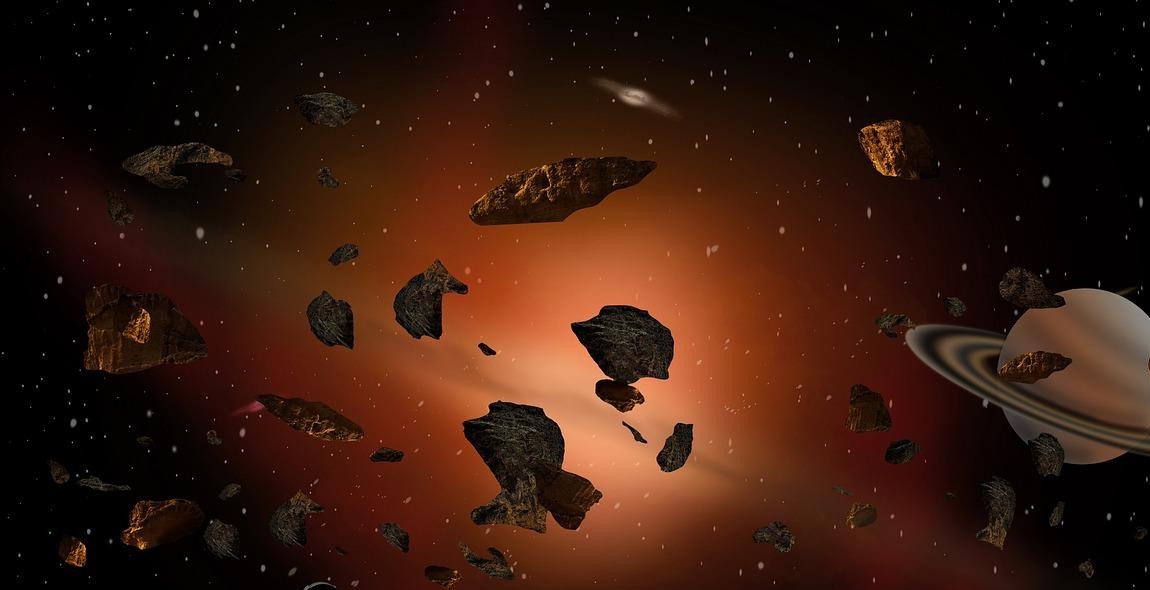Introduction
Space debris is a fascinating and important aspect of our universe. Asteroids, meteors, and comets are celestial bodies that roam our solar system, leaving a trail of debris in their wake. This debris, often referred to as space junk, poses potential threats to spacecraft and satellites orbiting Earth.
Asteroids are rocky objects that orbit the Sun and are remnants of the early solar system. They vary in size, from small boulders to massive rocks several kilometers in diameter. When an asteroid enters Earth’s atmosphere, it becomes a meteor, creating a streak of light commonly known as a shooting star.
Comets, on the other hand, are icy bodies composed of dust, rock, and frozen gases. As they approach the Sun, the heat causes the frozen gases to vaporize and form a glowing coma around the nucleus. The coma and the tail that forms as a result make comets easily distinguishable in the night sky.
Understanding the nature and behavior of these space debris objects is crucial for space exploration and the protection of our planet. In this article, we will delve deeper into the characteristics of asteroids, meteors, and comets, their origin, and the ongoing efforts to study and mitigate the risks associated with them.
What are Asteroids?
Asteroids, also known as minor planets, are rocky objects that orbit the Sun. They are remnants from the early days of our solar system, formed from the leftover material that did not come together to form planets. These celestial bodies are composed mainly of rock and metal, and they vary in size, ranging from small boulders to objects several hundred kilometers in diameter.
Characteristics of Asteroids
Asteroids have several distinguishing characteristics that set them apart from other celestial bodies:
- Composition: Most asteroids are made up of rocky materials, such as silicate minerals and metals like iron and nickel.
- Irregular shape: Unlike planets, asteroids do not have a spherical shape. They can be irregularly shaped, resembling potatoes or even resemble a dog bone.
- Orbital paths: Asteroids have elliptical orbits that can be found in various regions of the solar system, including the asteroid belt located between Mars and Jupiter, and the Kuiper Belt beyond Neptune.
- Impact potential: Due to their abundance and orbital paths, asteroids pose a potential threat to Earth. If a large asteroid were to collide with our planet, it could cause significant damage.
Types of Asteroids
Asteroids are classified into different types based on their composition:
- C-type asteroids: These are carbonaceous asteroids, which are the most common type. They contain a high percentage of carbon compounds and are dark in color.
- S-type asteroids: These are silicate asteroids, composed mainly of silicate minerals and metals. They are brighter and more reflective than C-type asteroids.
- M-type asteroids: These are metallic asteroids, primarily made up of metals like nickel and iron. They are often composed of large metallic cores.
Notable Asteroids
There are several notable asteroids that have caught the attention of astronomers and space enthusiasts:
| Name | Type | Description |
|---|---|---|
| Vesta | Vestoid (V-type) | One of the largest asteroids in the asteroid belt, known for its differentiated interior and unique geological features. |
| Ceres | C-type | The largest asteroid in the asteroid belt and the only dwarf planet located in the inner solar system. |
| Eros | S-type | An asteroid that was visited by the NEAR Shoemaker spacecraft, providing valuable data about its composition and surface characteristics. |
These notable asteroids offer valuable insights into the formation and evolution of our solar system, as well as potential resources for future space exploration.

What are Meteors?
Meteors are small celestial objects that enter the Earth’s atmosphere and burn up, creating a luminous streak of light in the sky. Also known as shooting stars, meteors are remnants of asteroids or comets that have collided with the Earth’s atmosphere.
Characteristics of Meteors
Meteors are typically composed of rock, metal, or a combination of both. They are relatively small in size, ranging from a grain of sand to a few meters in diameter. When a meteor enters the Earth’s atmosphere, it experiences intense friction, which causes it to heat up and vaporize. This process creates the bright trail of light that we see in the sky.
Most meteors burn up completely before reaching the Earth’s surface. However, larger meteors, known as meteorites, can survive the journey through the atmosphere and land on the Earth’s surface.
Types of Meteors
There are two main types of meteors:
- Iron Meteors: These meteors are primarily composed of iron and nickel. They are denser and more resistant to burning up in the atmosphere, which increases their chances of surviving and becoming meteorites.
- Stony Meteors: Stony meteors are composed of silicate minerals and are more common than iron meteors. They are lighter and more prone to burning up completely in the atmosphere.
Meteor Showers
Meteor showers occur when the Earth passes through the debris trail left behind by a comet or asteroid. These showers are named after the constellation from which they appear to originate. During a meteor shower, multiple meteors can be seen within a short period, creating a spectacular display in the night sky.
Some well-known meteor showers include the Perseids, Leonids, and Geminids. These showers occur annually and provide skywatchers with an opportunity to witness a higher frequency of meteors compared to regular nights.

What are Comets?
Comets are celestial bodies that orbit the Sun and are composed of ice, dust, and rocky material. They are often referred to as “dirty snowballs” due to their icy composition. These icy bodies originate from the outer regions of the solar system, specifically the Kuiper Belt and Oort Cloud.
Characteristics of Comets
Comets are known for their distinct characteristics, which set them apart from other space debris:
- Nucleus: At the center of a comet is its nucleus, a solid core made up of rock, dust, and ice. The nucleus can vary in size, ranging from a few kilometers to tens of kilometers in diameter.
- Coma: As a comet approaches the Sun, its nucleus heats up, causing the ice to vaporize and release gases and dust. This forms a glowing cloud of gas and dust around the nucleus, called the coma. The coma can extend for thousands of kilometers.
- Tail: The coma of a comet is often accompanied by a tail. The tail consists of two distinct parts: the ion tail and the dust tail. The ion tail is composed of ionized gas that is pushed away from the Sun by the solar wind, while the dust tail is made up of dust particles that are pushed away by radiation pressure.
Composition of Comets
Comets are composed of various substances, providing valuable insights into the early formation of the solar system. The composition of comets typically includes:
- Water Ice: Water is the most abundant component of comets. It exists in both solid and gaseous forms within the nucleus and coma.
- Organic Compounds: Comets contain complex organic compounds, such as methane, ethane, and carbon monoxide. These compounds are essential building blocks for life.
- Dust Particles: Comets also contain microscopic dust particles, consisting of silicates, carbon, and other minerals. These particles provide valuable information about the early stages of the solar system.
Famous Comets
Throughout history, several comets have captured the attention of astronomers and the public alike. Some of the most famous comets include:
- Halley’s Comet: Named after the astronomer Edmond Halley, this periodic comet is visible from Earth approximately every 76 years. It is one of the most well-known comets and has been observed for centuries.
- Hale-Bopp: Discovered in 1995, Hale-Bopp became one of the brightest comets of the 20th century. It remained visible to the naked eye for a record-breaking 18 months.
- Comet Shoemaker-Levy 9: This comet made headlines in 1994 when it collided with Jupiter, creating a series of spectacular impacts. It provided valuable insights into the dynamics of both comets and the giant planet.
The study of comets continues to contribute to our understanding of the solar system’s formation and evolution. By analyzing their composition and behavior, scientists can unlock clues about the early stages of our cosmic neighborhood.

The Impact of Space Debris
Space debris, also known as space junk, refers to the collection of defunct human-made objects orbiting Earth. As space exploration and satellite launches continue to increase, so does the amount of space debris. This accumulation of debris poses potential hazards to both manned and unmanned spacecraft, as well as our planet. In this section, we will explore the impact of space debris and the measures taken to monitor and mitigate its effects.
Potential Hazards
Space debris travels at incredibly high speeds, reaching up to 17,500 miles per hour. At these velocities, even small debris particles can cause significant damage to functioning satellites and spacecraft. Collisions with space debris can result in equipment failure, mission disruption, and even the loss of human lives. Furthermore, the proliferation of space debris increases the likelihood of collisions between debris objects, resulting in a cascade effect known as the Kessler syndrome. This could potentially render certain orbits unusable and pose a significant threat to future space missions.
Monitoring
Efforts to monitor space debris are crucial in order to predict potential collisions and assess the overall risk. Space agencies and organizations around the world, such as NASA and the European Space Agency (ESA), employ various tracking systems to monitor space debris. These systems utilize radar and optical telescopes to track debris objects and collect data on their orbits. Additionally, ground-based radars and space-based sensors are used to detect smaller debris objects that are harder to track. This monitoring allows for the calculation of collision probabilities and the implementation of necessary precautions.
Mitigation
Mitigating the impact of space debris involves both active and passive measures. Active mitigation techniques include deorbiting satellites at the end of their operational lives, reducing the creation of new debris through responsible satellite design, and actively removing larger debris objects from orbit. Passive measures include designing satellites and spacecraft to be more resistant to debris impacts, such as using shielding materials and implementing redundant systems. International collaborations and guidelines, such as the Inter-Agency Space Debris Coordination Committee (IADC), aim to promote responsible space practices and encourage debris mitigation efforts.

Exploring Space Debris
Space debris refers to the collection of defunct human-made objects orbiting the Earth. These objects include spent rocket stages, defunct satellites, and fragments from disintegrated spacecraft. With the increasing number of space missions and satellite launches, the amount of space debris has become a significant concern for space agencies and researchers.
Space Debris Research
Scientists and researchers are actively studying space debris to understand its behavior, trajectory, and potential hazards. They use ground-based radar systems, telescopes, and satellite tracking technologies to monitor and track space debris. This research helps in predicting the movement of debris and identifying potential collision risks for operational satellites and spacecraft.
Additionally, researchers are studying the composition and physical properties of space debris to develop effective mitigation strategies. By analyzing the characteristics of debris, scientists can determine the best methods for debris removal and design spacecraft and satellites that are more resistant to collisions with space debris.
Space Debris Removal
Several initiatives and technologies have been proposed for space debris removal. These include active debris removal missions, such as capturing and deorbiting large pieces of debris, and passive debris mitigation techniques, like ensuring satellites and spacecraft are designed to reenter the Earth’s atmosphere and burn up upon the end of their operational life.
One approach to active debris removal is the use of robotic arms or nets to capture and deorbit debris. Another proposed method is the deployment of small satellites equipped with nets or harpoons to capture and remove debris. These technologies are still in the experimental stage but show promising potential for reducing the amount of space debris in orbit.
Overall, exploring space debris and finding effective ways to remove it is crucial for the sustainability of future space missions and the safety of operational satellites. Ongoing research and technological advancements are essential to mitigate the risks posed by space debris and ensure a sustainable space environment.
